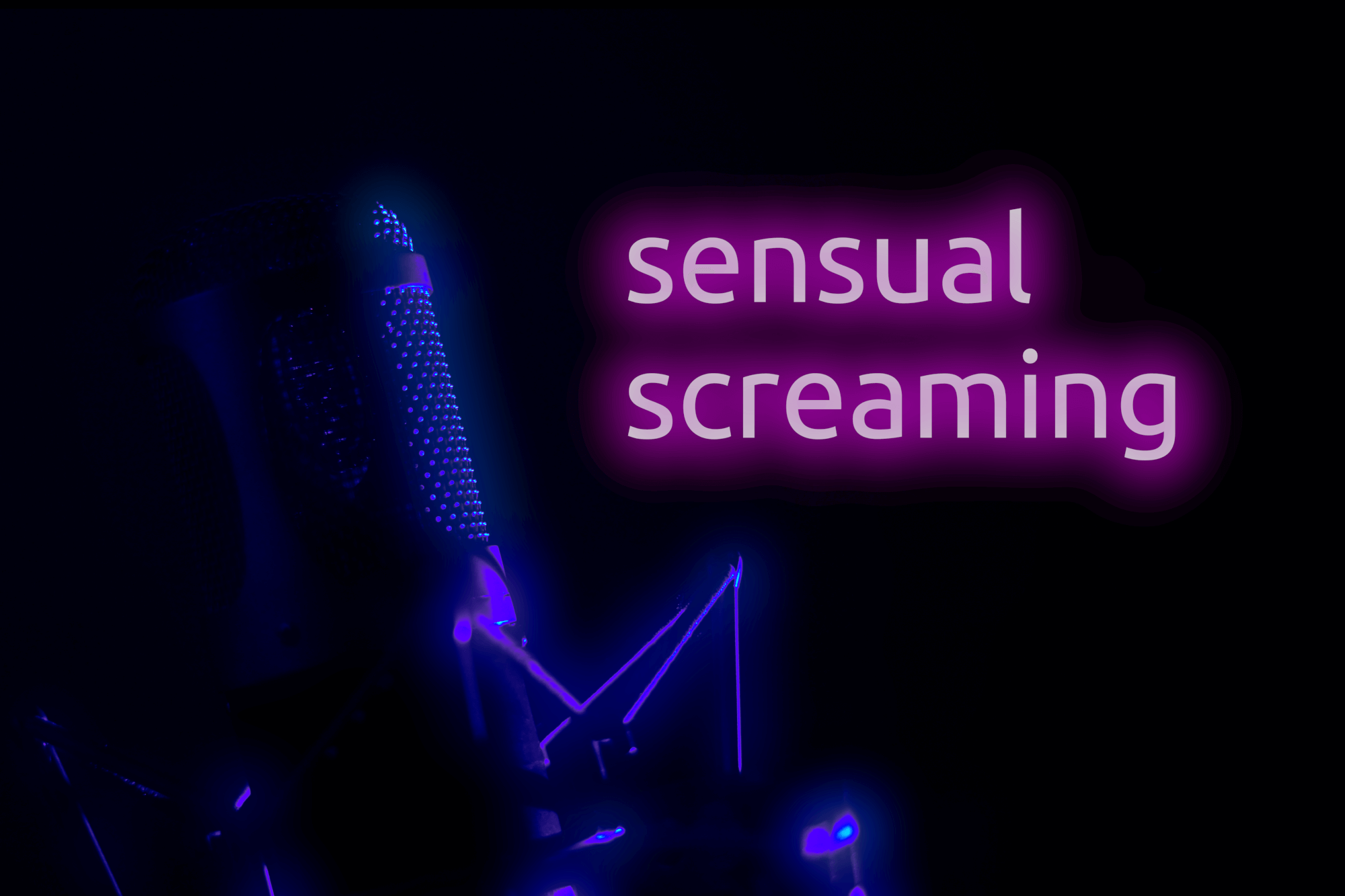sensual screaming
Performance für vier Schlagzeuger, e-drums, Stimmen und 4-Kanal- Soundsystem


Flüstern, wispern, hauchen. Viel Luft, ein Atemzug, noch einer, ganz nah. Lippen die sich schließen, Konsonanten, ganz fein, leise, nichts überartikuliert, sondern weich, mehr braucht es auch nicht, es ist ganz groß. Aufgebauscht durch Makroeinstellungen, die Installation einer Wärme und Nähe aus der Ferne. Ein Gefühl von Aufgehoben sein, von Aufmerksamkeit die nur dir zuteil wird. Die sich über dich senkt, ganz langsam, aber mit aller Eindringlichkeit. Mit einer Dringlichkeit der Mitteilung. Der Mittteilung des Miteinanders, der Existenz nebeneinander. Soft spoken voice. Inhalte sind vorbei.
In sensual screaming trifft ASMR-Ästethik auf Virtuosentum und Körperlichkeit. Die Arbeit basiert auf Klangmaterial aus der ASMR-Kultur und bedient sich kompositorischen Mustern der Minimal Music. Audio-samples verschiedener Akteur*innen der seit Jahren erfolgreichen ASMR-Szene werden mittels Drumpads getriggert und in rhythmischen Figuren aneinandergereiht und geschichtet, repetitive Muster werden aufgebaut, verändert und weiterentwickelt. Durch die der Minimal Music immanenten Repetitionen und Verschiebungen entsteht ein trance-artiger, stetig wandelnder Klangkosmos.
Nicht erst seit Corona erreicht ASMR ein großes Publikum mit Millionen von Nutzern, in der Krise impliziert es jedoch ein umso dringenderes Verlangen nach Nähe und sinnlicher Erfahrbarkeit inmitten körperlicher Isolation. Das Material, das dabei vertrieben wird, könnte intimer kaum sein. Hochauflösende Nahaufnahmen in Bild und Ton, von einzelnen Mundpartien, anderen Körperteilen oder der Stimme. Dazu die Art des Sprechens oder die Simulation körperlicher Anwendungen wie Massagen - in eindrücklicher Zärtlichkeit, voller Aufmerksamkeit und Zuwendung. In der plattformkapitalistischen Verwertungslogik von Körpern und Individualität zeigt ASMR eindrucksvoll die Verwischung der Grenzen zwischen Konsumenten und Produzenten, die wachsende Konkurrenz erfordert wiederum höheren Einsatz. Der Wettbewerb ist gewaltig, die Offenlegung weiterer intimer Details, emotional wie körperlich, ist die Folge. Konsumiert wird die Suggestion von Nähe und Zuwendung meist in absoluter Isolation. Allein, zu Hause, meist auf dem Sofa oder Bett, durch Kopfhörer abgeschirmt von der physischen Umgebung. Eine Isolation, die aktiv betreten werden muss. Für die Rezeption einer Intimität, die man mit Millionen anderer Nutzer teilt.
Klanglich bedient sich ASMR dabei einer Ästhetik, die der Klang- und Materialforschung der Kunstmusik der letzten Jahrzehnte sehr nah ist. Allerdings mit dem weitaus größeren Publikum.
In diesem Kontext von Öffentlichkeit und Isolation, Körperlichkeit und Entkörperung eröffnet Sensual Screaming eine Aufführungssituation, in der der Rezipient immer Teil einer größeren Gruppe ist. Die intimen, fragilen, nah aufgenommenen Klänge werden über das 4-Kanal-System in hoher Lautstärke durch den Raum gejagt. Die körperliche Präsenz der Schlagzeuger und ihre Schlagbewegungen kontrastieren das Spiel von Nähe und Distanz. Sie sind Auslöser der Klänge, befinden sich durch die ständige Wiederholung in einem Zustand von Unfreiwilligkeit. In einem Moment von Manie, von Getriebensein, von Mechanik oder Automatisierung, bewegen sie sich in einem Call-and- Response System, in dem immer mehr gefordert und immer mehr geliefert wird.